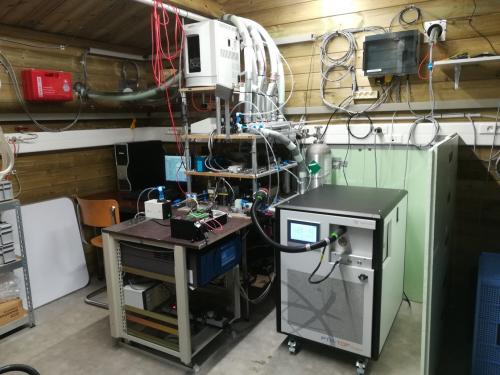Scientific context and objectives
Terrestrial ecosystems (mainly forests) are the major global source of atmospheric Volatile Organic Compounds. Accounting for VOCs in air quality and climate models requires functional relationships describing the emissions in terms of plant-specific standard emission factors and environmental and plant physiological parameters.
The most suitable way to obtain this information at ecosystem scale is by eddy covariance flux measurements above the forest canopy. For several important VOCs, flux variability is not yet well understood.
In collaboration with ULiège, we set up a dedicated infrastructure at the Integrated Carbon Observation System (ICOS) mixed forest site of Vielsalm in the Belgian Ardennes to investigate multiple VOC sources and sinks in the complex soil-canopy-atmosphere continuum, and their impact on the net above-canopy VOC fluxes.
This research is conducted in close collaboration with ULiège (Gembloux Agro-Bio Tech) in the framework of the BERTRAC research profile and the Belgian contribution to the Aerosol, Cloud and Trace Gases Research InfraStructure (ACTRIS).
Measurement site and infrastructure
A new log cabin was installed close to the 51m high flux tower at the ICOS terrestrial observatory. Ambient air is sampled from the top of the tower and pumped through heated and thermally insulated Teflon tubing towards the cabin.
The latter houses state-of-the-art in situ instrumentation to measure reactive trace gases in the sampled air, such as an in-situ Proton-Transfer-Reaction Time-Of-Flight Mass Spectrometry (PTR-TOF-MS) VOC analyzer and an ozone analyzer. The entire measurement set-up can be operated remotely, except for filter changes and instrument maintenance.
Whereas high frequency measurements of VOC concentrations (PTR-TOF-MS) and 3D wind speed (sonic anemometer at the top of the tower) result in net above-canopy VOC fluxes, a vertical VOC concentration profile along the tower (7 sampling points) is expected to provide information about VOC sources and sinks between the surface and the top of the tower through inverse modelling.
Analysis of the reactive trace gas flux measurements will clearly benefit from the long time series of CO2 and H2O fluxes available for this ICOS site and the close follow-up of environmental conditions and soil characteristics.
A first campaign with the new infrastructure took place during the 2022 growth season and data analysis is under progress.

